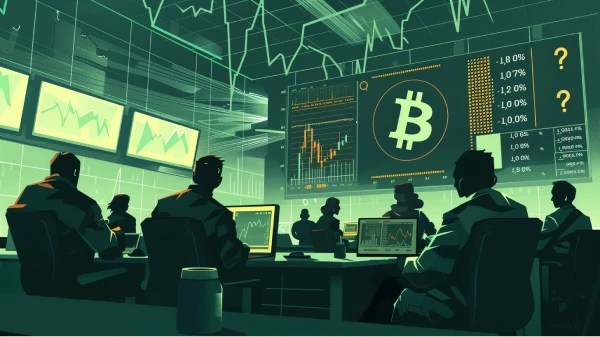What Is A Flash Crash?
A flash crash is a large and sudden decrease in the price of an asset. A flash crash typically occurs due to unique market conditions, not actual changes in the asset’s underlying utility or value, and may occur in a matter of minutes or seconds.
There is no threshold on the speed or size of a market move in order to classify it as a flash crash. Instead, it is assessed somewhat arbitrarily when a price change is considered far beyond the market’s typical activity. What qualifies as a flash crash will depend on the market in question, since certain assets are more prone to volatility than others.
The exchange rate of two major fiat currencies is typically very stable, and a flash crash might only be a move of a couple percentage points. A Bitcoin flash crash would require a much larger price percentage point movement, since its price tends to be more volatile. Investors can profit tremendously from flash crashes by short selling assets.
What Causes Flash Crashes?
Flash crashes can occur for many different reasons. The structure of a given market determines what types of flash crashes are most likely to occur.
In markets with high volume and depth relative to market cap, a flash crash typically occurs due to runaway algorithmic trading strategies. These algorithms move large quantities of assets very rapidly, without any human input. Often, trading algorithms will look at each others’ activity to determine their own actions. If multiple algorithms use each other’s sales as a signal to sell as well, a positive feedback loop can ensue where several actors trigger each other to continue selling.
In markets with less depth, a flash crash can occur due to the trading activity of a single actor. If that actor market sells a very large quantity of a particular asset, in a market with insufficient depth or demand to counteract the drop in price, then a flash crash will result. Trades like this typically lose a lot of value for the seller, and are often executed by accident. Notably, this occurred when large sell orders temporarily drove bitcoin’s price down to $0.01 in June of 2011.
Flash crashes can be exacerbated by traders holding leveraged positions. As the price drops, traders will have to sell their position in order to cover their losses. This puts additional downward price pressure on the asset and can trigger other traders to close out their position as well.
➤ Learn more about leveraged bitcoin trading.
Handling Flash Crashes
Some markets implement procedures for mitigating the severity of flash crashes. For example, under Rule 48, the New York Stock Exchange (NYSE) and Nasdaq, and other index funds were allowed to temporarily halt trading on an asset if its price moved too far in a single day of trading. However, Rule 48 was abolished in 2016. Following the abolition of Rule 48, the Securities and Exchange Commission (SEC) now possesses the authority to halt trading of any public stock for a period of 10 days or less.
This gives investors a few minutes to assess their strategy and override algorithmic trading strategies, which may be causing the undesired market outcome. This doesn’t eliminate the impacts of a flash crash, but it does give investors time to react and make necessary updates to their strategy.
In Bitcoin markets there are no trading halts to stabilize the market, so investors must manage this risk through their own trading strategies. The exact strategy an investor uses depends on their risk tolerance and how they expect the market to react to the crash.
In many cases, a flash crash is completely temporary, and the price rebounds as quickly as it dropped. This is especially likely if the crash was due to a single actor placing a large sell. To prepare for this scenario an investor may use limit orders to buy more of the asset when the price declines, selling once it goes back up.
In other scenarios, the flash crash may be followed by continued drops in price. This is likely if the crash was triggered by news that materially affects the value of the asset. In order to limit potential downside, an investor may implement a stop-loss or stop-limit strategy to automatically exit a position if the price drops below a specified threshold. However, the risk of this strategy is that an investor exits a position for a loss and then misses the upside of the price recovery.
A much simpler approach is to simply maintain consistent exposure to an asset, regardless of changes in the price. Markets are typically very difficult to predict, and trying to time them may lead to lower returns. By minimizing active trading, an investor eliminates the complications of trying to time the market. Additionally, minimizing active trading avoids trading fees associated with constantly changing an investment position.
➤ Learn more about Why is Bitcoin Volatile?
Notice: River does not provide investment, financial, tax, or legal advice. The information provided is general and illustrative in nature and therefore is not intended to provide, and should not be relied on for, tax advice. We encourage you to consult the appropriate tax professional to understand your personal tax circumstances.Key Takeaways
- A flash crash occurs when Bitcoin’s price decreases significantly and quickly.
- Flash crashes may be caused by trading algorithms or large individual trades.
- Leveraged positions will exacerbate the size of a flash crash.


